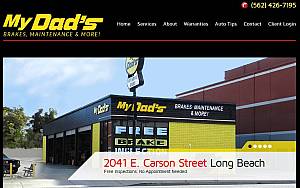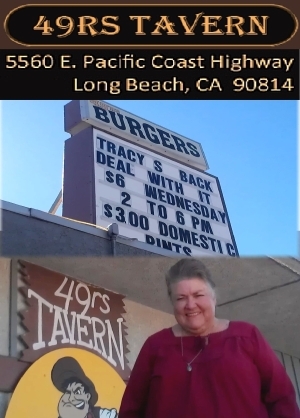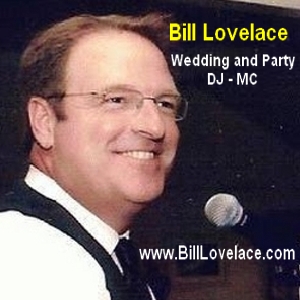
|
|
 |
| (December 30, 2013, with updated add'l text) -- LBREPORT.com cites ten (and welcomes your inclusions) in our list of "City Hall Outrages of 2013." We offer ours constructively, noting that virtually all of them can be corrected in 2014 by elected officials or by the public who elects them.
Instead, in June 2011 and again in February 2013, the Council was shown a management prepared Power Point slide and told that seismic upgrade costs "were estimated." Management didn't say from where the estimate came, who estimated it and didn't cite any data sources. Management also said the activity would trigger additional ADA upgrades, other needed capital improvements to the HVA system, the elevators and other building systems which were also "estimated." So-called "soft costs," furniture fixtures and equipment and temporary relocation costs were also added on, producing a 2006 estimate of $119 million. Management then used a 5% annual increase to create a 2013 cost estimate -- stress: estimate -- of $170 million. LB City Hall is less than forty years old. It was completed in 1977. Los Angeles seismically retrofitted its City Hall, built in the 1920s, when it was roughly seventy years old. San Francisco, Pasadena and other cities have done likewise. The businesslike way for a city to determine the real cost of such work is seek bids and proposals from those who would actually do the work. That is precisely what the City of Long Beach didn't do. Instead, in December 2013, a Council majority (Schipske dissenting) voted to contractually obligate the City to incur several million dollars in up front costs to pursue an arrangement in which a private developer/operator would design, build, finance, maintain and operate the entirely new, outsourced Civic Center Plaza for the developer/operator's private profit. We know of no major business that would make a decision of this magnitude based on "estimates" on a Power Point slide without seeking bids/proposals to learn the real costs of a more economical option. We doubt families would treat their own affairs in such an unbusinesslike manner. Knowing the real cost of seismically retrofitting a publicly owned building -- from those who actually do such work -- is a material fact. Voting to destroy a taxpayer-built building -- without first credibly establishing that material fact -- and then voting to obligate the public to incur major costs for an even bigger project that could benefit private interests, is in our opinion very disturbing. On June 21, 2011, city management scheduled a City Council study session regarding the Civic Center" and at that time, Councilman Patrick O'Donnell asked rhetorically, "How can we afford this if we can't afford to fix out streets?" and said his vote on a new City Hall is "no." Then-Councilwoman (now retired) Rae Gabelich said, without any audible dispute from management, Councilmembers or the Mayor, that the study session was brought forward at the request of Councilman Garcia (who wasn't present) and then-Vice Mayor Lowenthal. Gabelich said considering the issue of a new City Hall sends wrong message to the public, especially when the City has reduced police service and can't fix its streets. Unfazed, Councilwoman Lowenthal said she supports exploring a public-private-partnership ("P3") project for a Civic Center rebuild...and Mayor Foster indicated this wouldn't be the last time the Council hears about this. Sure enough, on February 12, 2013, city staff agendized an item (scheduled on minimal notice with the signatures of Robert Garcia, Suja Lowenthal and Dee Andrews) recommending the start of a P3 process for a massive Civic Center rebuild (a Request for Qualifications to see how many firms might be interested in taking part.) At that point, the Council could still have said "no." On Oct. 22, 2013, city management asked the City Council to approve issuing a Request for Proposals (RFP) to ask three selected developer/operator teams how much they'd charge the City to build, operate, finance, maintain and operate a new Civic Center for their profit. At that meeting, city management acknowledged that its latest Seismic Report concluded that action must be taken immediately "to either retrofit or construct a new facility." [emphasis added.] In other words, the city's own seismic report effectively acknowledged that retrofitting was a feasible option. Multiple public speakers urged retrofitting LB's current City Hall. Representatives of Long Beach Heritage opposed a City Hall tear-down/rebuild and supported a retrofit. Retired Deputy City Att'y Jim McCabe urged caution on the proposal to rebuild City Hall citing a lack of transparency (including refusal to release Seismic Study's Executive Summary to LBREPORT.com) and also voiced the opinion that large sums involved in the transaction were in his view potentially problematic. Nearly no public speakers directly supported the City Hall tear down/Civic Center rebuild. Yet Councilwoman Suja Lowenthal called building a new Civic Center a "once in a lifetime" opportunity. Vice Mayor Garcia said the new Civic Center would be a bold use of public space for multiple purposes. Lowenthal made a motion, seconded by Garcia, to direct city staff to prepare a "Request for Proposals" to finance, tear down, rebuild and outsource operation of a new City Hall and Civic Center complex for a private developer/operator's profit. The vote was 8-1 (Schipske dissenting.) At this point, the Council could still have said "no." But on December 3, 2013, city management requested authority to enter into a binding contract to hire a consultant team to prepare the RFP (for submission to the three competing developer/operator teams.) Management revealed the significant upfront costs it didn't quantify in October: roughly $1 million to $3+ million (with $750,000 more for outside legal counsel coming separately)...and the prospect of more sums to come. Entering into contract would make it much harder to reverse course later (after spending several million dollars) to pursue less costly alternatives for taxpayers. Shortly before the Council vote, LBREPORT.com made available online and on-demand an audio interview with an award winning Long Beach architect with experience in adaptive reuse of buildings with seismic issues. He put the retrofit cost far below what city staff claimed. To hear what the architect told us in his own words, click here [updated text, further details added Dec. 31] The Council ultimately approved spending over $1 million upfront [we haven't seen the contract yet to see what else is coming], reduced outside legal fees to $450,000 for now but with more possible if requested later, plus $75,000 for sham "public outreach" [see below] in a binding cccntract with a onsultant firm to prepare an RFP for the Civic Hall teardown/Civic Center rebuild. Robert Garcia, Gary DeLong, Patrick O'Donnell, Dee Andrews, James Johnson, Al Austin and Steven Neal (four of whom are seeking higher office) voted "yes." Councilwoman Gerrie Schipske (who's also seeking higher office/Mayor) voted "no." (Councilwoman Suja Lowenthal, who is also seeking higher office, was absent for the Council meeting but, as indicated above, had previously voiced her support for pursuing a new Civic Center which would be in her 2nd Council district.) City management told the Council it doesn't plan to let the Council see the RFP for the Civic Center rebuild before submitting it to the prospective development teams. That means the $75,000 so-called "public outreach" (about to be unleashed on the public) will basically be a sham to entice the most gullible to "buy in" to the proposal and provide political cover for Council incumbents...although Councilmembers just voted for a process in which they will have no opportunity at a public Council meeting to see and revise what management will send out. The use of a "P3" process, which delivered a shiny new Long Beach courthouse, was criticized by the State Legislative Analyst's office. It also derailed other planned court projects and services. Will a P3 Taj Mahal Civic Center rebuild likewise derail other needed Long Beach projects? Those concerns were barely discussed. To us, the troubling issue is a threshold question that wasn't seriously asked or answered: what is the actual cost of an economical seismic retrofit for City Hall -- not an estimate on a Power Point slide but from bids or proposals by those actually doing the job? The failure of a City Council majority (with only Schipske dissenting) to insist on that answer before committing LB taxpayers to millions in upfront costs with millions more to come is in our opinion the most outrageous City Hall action of 2013. If you still object, Foster says previous City Councils took $150 but only put about $20 when they knew or should have known you'd have to spend $60 or more later, so you ought to grateful for what they're taking from you now. Meanwhile across the street, someone is being robbed at gunpoint (or in some parts of town, shot.) Foster and Councilmembers shrug this off and heading to the bank to deposit generous raises. Are you better off now? "Pension reform" sounds so much nicer than "unbudgeted raises," and Mayor Foster and some Councilmembers have tried very hard to first conceal the raises, then portray them as "pension reform." To his credit, Councilman James Johnson spoke the truth in saying publicly that they're not pension reform. They're just plain raises. In 2013, Long Beach city officials first concealed whopping raises -- 15% over two or three years in new contracts for four unions, including unionized management -- that evaded public discussion during the FY14 budget cycle, then spun the outcome as an accomplishment, saying Long Beach had become the largest city within CalPERS to achieve "full pension reform." What City Hall didn't say was that Long Beach may also be the only California city, large or small, that "balanced its budget" by letting sworn police for taxpayers citywide to fall by roughly 20%, has no plan to restore the vanished officers, cut the cops just as Sacramento unleashed "realignment," cut firefighter resources, is attempting to impose a less expensive paramedic staffing system that it says is better on the merits but hasn't been field tested yet in any other L.A. County city, cut other city services AND STILL gave raises to every one of its public employee unions -- including unionized city management. That surely is a newsworthy accomplishment...especially heading into an election cycle. What Foster and Councilmembers did was belatedly insist on an overdue pension change that normalized what had been abnormal and unsustainable. For years, City Hall officials (candidates for our 2014 Amnesia File) quietly agreed to contracts that paid part of the employees' pension share, saddling taxpayers with millions in unfunded liabilities. For years, individual taxpayer advocates had urged a change in this practice but were ignored. The Foster administration itself, aided by compliant Councilmembers, collaborated in the profligate pension practice for the first half of Foster's first term, agreeing to city employee union contracts that didn't include what Foster now calls "pension reform." When the economic downturn hit, the Mayor and Councilmembers finally insisted on the overdue pension change, accompanied by hamfisted, Mayor Foster cites the "great recession" for this, but residents can see for themselves that other neighboring cities weathered the same economic downturn without decimating their core services. Long Beach City Hall, with Council approval, imposed what it called "proportional budget cuts"...but which disproportionately fell on police and fire services. In 2013, formerly quiet Long Beach neighborhoods experienced alarming property crime increases. Entering 2014, neither Mayor Foster nor those who seek to succeed him and his former Council majority have offered any taxpayer friendly plan to restore the services taxpayers once received. On the same night as a Council majority approved the managers' contract (7-2, Schipske and Johnson dissenting), city management said the city couldn't afford restore previously provided LBFD Engine 8 and Rescue 12 without cutting other services, tapping reserves or inviting deficits (coverage here.) For years, taxpayer advocates -- including Larry Boland, Kathy Ryan and Tom Stout -- have spoken at City Council meetings about exactly what the Reason Foundation noted in analyzing the City of Long Beach's "full pension reform": [Reason Foundation text]...Like every positive development in government, there is a catch to all these reforms. The last four bargaining units to officially ratify the agreements -- engineers, confidential employees, managers, and lifeguards -- agreed to a deal that is estimated to cost taxpayers $83 million over 10 years. How? While agreeing to pay their full 8% contribution, up from 2%, the city offered employees a 6% pay increase to cover the cost of these contributions. In addition, these employees will receive a 5% salary increase in the first year of the contract, and an additional 4% salary increase in the second year of the contract. Of course City Hall portrays its action as "pension reform," but we think it's more accurately described as a normalized pension change. Achieving normalcy isn't revolutionary; it's welcome but overdue...and with the raises, already burdened taxpayers will end up paying even more. In the four new contracts (which include unionized management), taxpayers will pay for a 9% increased take home pay plus the 6% additional percentage paid toward the employee's pension. Yes, the additional pension portion is deducted from the employee's salary, but the raise more than covers that and the employee will recoup the deducted sum in his/her pension on retirement. At that time, the raises will further impact taxpayers by requiring a higher pension payout, calculated based on the higher base salary. In our opinion, real pension reform would have made taxpayers whole, but Foster and the Council didn't do that. They could have, and in our opinion should have, insisted on give backs and reductions to compensate taxpayers for the profligate 2002 IAM "pension spike" that candidate Foster criticized when seeking votes in 2006. Instead, in 2013, incumbent Mayor Foster and the City Council gave IAM a generous raise (enough to prompt a dissent from Councilman Gary DeLong; for his views from Jan. 2013, click here.) When asked in October 2013 how City Hall would pay for the 15% raises in the unbudgeted contracts unveiled after the Council adopted its FY14 budget, city management offered the same chilling faith-based response LB taxpayers heard in 2002: a belief that the money would be there. If the money isn't there, taxpayers will (again) have to pay it from service reductions or higher taxes or both. Today, the City of Long Beach as a municipal corporation is better off for the pension changes. However the other part of that equation is that taxpaying residents and businesses are worse off in terms of what they receive in police levels, fire resources and other core services. It will take future Councils to confront and correct this. Vice Mayor Robert Garcia and Councilmembers Suja Lowenthal, Gary DeLong, Patrick O'Donnell, James Johnson, Al Austin and Steven Neal (Dee Andrews was absent) remained silent, not one seconding a simple motion to send Schipske's proposal to the Council's Elections Oversight Committee (O'Donnell, Lowenthal, Andrews) for a report within 90 days. Here's what seven silent Councilmembers didn't want discussed: In presenting the item, Councilwoman Schipske noted that the City of San Jose has already adopted the Public Record requirements on Council emails that she proposes, and said federal courts have upheld the restrictions on campaign contributions that she proposed. When not one Councilmember seconded her motion to refer the item to a Committee for discussion, Councilwoman Schipske said "how said" and Mayor Foster sought to move on without public testimony on the item, However retired Deputy City Attorney Jim McCabe came to the public speakers podium and sought to be heard. Mr. McCabe commended Councilwoman Schipske for bringing item forward...and commented that in his view, the item would have to be brought to the voters. For quick audio access to hear the item in full (total time under six minutes), click here At the end of the Council meeting, another member of the public came to the public speakers' podium and expressed surprise that no Councilmember would allow Committee discussion of the changes proposed by Councilwoman Schipske. As previously reported by LBREPORT.com, a source on City Hall's 14th floor [not affiliated with Schipske's office] told us prior to the Council session that some Council offices and lobbyists were "freaking out" over Schipske's proposals. The increasing use of non-City Hall domains by CA elected officials, which avoids Public Records Act disclosure of their communications, has been a matter of concern for open government advocates including the First Amendment Coalition. In August 2009, First Amendment Coalition Executive Director Peter Scheer wrote in an essay titled "Government officials use personal email and texting to avoid public access laws. Why not use technology to enhance accountability instead of to subvert it?": All public officials favor open government in principle. Who would dare say otherwise? In reality, however, they are in a perpetual search, guided by clever lawyers, for new ways to circumvent disclosure requirements -- at best, because they view requests for records as a nuisance, and at worst, because they have something to hide (which can range from the merely embarrassing to the indictable). The ugly refusal of Garcia, Lowenthal, DeLong, O'Donnell, Johnson, Austin and Neal even to discuss plugging a major digital loophole in the city's public records policy, provide transparency on what transpires out of the public's view at Council meetings and curtail the acceptance of campaign contributions from those having business before the City Council is now their public record. There are two possibilities here. One is that they thought Schipske might look bad if they didn't second her motion. If that's what happened, then the opposite is true; they looked bad. Elected officials are accountable for how they vote, not for how others vote. To argue otherwise turns accountability on its head. If Long Beach has elected officials who would let personal feelings and political pettiness drive their substantive public Council actions, they are the ones who need to change. (We also note that some of the worst decisions in LB history were made on unanimous votes.) The other possibility is that some of the silent Council incumbents simply feared greater digital openness and transparency and local campaign contribution reforms. If that's what happened, then the city now knows who they are. What exactly would you accept as "mitigation" for a massive railyard in your neighborhood? Money? Shrubbery? Asthma inhalers? Yes, the City Council agreed to file a lawsuit challenging the railyard EIR, but that invites politicians to settle the case in exchange for shrubbery, money and asthma inhalers. At a November 2013 Mayoral forum, candidates who attended were asked point blank if they supported the BNSF railyard project. To hear their answers, For audio, click here. (Some candidates, including the LB Chamber-PAC backed Damon Dunn, declined to attend the forum.) None of those attending said the words we wanted to hear: on-dock rail. Long discussed but not delivered (apart from short transfer line inside the PoLB), both Ports claim say they have no room for on-dock rail, but that's a poor defense; the Ports created that situation by leasing out their available space and not seriously planning for on-dock rail. Our remedy now is admittedly more costly, but it is of their doing: it means creating new landfill for on-dock facilities, then so be it. Politicians who prioritized spending billions in public funds to accommodate cargo interests with a new bridge and a 14 lane freeway shouldn't expect residents to accept shrubbery, RR money and asthma inhalers. In May 2013, LBREPORT.com reported on sums BNSF gave to Council incumbents at that time (coverage here.) On Jan. 31, 2014, the next round of campaign finance reports are due...and LBREPORT.com will continue to follow the money. This angered two veteran coastal protection advocates: Gordana Kajer and Melinda Cotton. Ms. Cotton objected to the lack of transparency and lack of public participation in the process; she urged the Council to discuss the item before advancing it to the Coastal Commission. The Council ignored her sensible advice. For her part, Ms. Kajer (working independently of Ms. Cotton) armed herself for the coming Coastal Commission battle, preparing a detailed text and a Power Point presentation challenging city staff's contentions. At the June 13, 2013 Coastal Commission meeting in Long Beach, city management staffer Eric Lopez said the second path would create more open sand area in some areas by moving parts of the current path inland and would make the paved pathways safer. Long Beach Fire Chief Mike DuRee said the second separated path for pedestrians and bicyclists would be safer with likely fewer calls for service to handle accidents between walkers and bike riders which he indicated are now at the rate of roughly 5-7 per month. Those numbers didn't sound right to Ms. Kajer and after the Coastal Commission hearing, Ms. Kajer did what many LB journalists didn't do: she fact-checked the officially-stated numbers using the CA Public Records Act. On October 17, 2013, Ms. Kajer publicly produced the results of that Public Records Act request at the City Council podium and in a letter to City Manager West cc'd to all Councilmembers. Some excerpts: [Kajer Oct. 17 letter text] ...Long Beach Fire Department Chief DuRee was very clear in his public testimony to the California Coastal Commission on June 13,2013 concerning the number of accidents on the path ("5-7 per month") in support of the City's proposal for a new, separated beach path.
LBREPORT.com has been unable to corroborate Councilwoman Lowenthal's representation regarding City Council deliberation of the issue. A June 2013 request to her Council office seeking the date and time when such deliberation took place remains unanswered at year's end. When Ms. Kajer came to the podium, she said bluntly, "The public was not allowed to comment or debate on this project" and continued: [The City] went out and made one-sided presentations, Power Point presentations to the public and essentially explained that this is what Tidelands Funds were going to be buying for our public here in Long Beach... Coastal Commissioner Wickett made a substitute motion to continue the item to enable public input at the LB City Council before bringing the matter back to the Coastal Commission.
Garcia, who was on the City Council when it supposedly deliberated on the matter, remained silent on what Councilmembers did or didn't do but said the public would have opportunities to comment when the path returns to the Council to discuss its design [i.e. after it had receives Coastal Commission approval]. The substitute motion to continue the item to ensure public input at the Long Beach Council was defeated 4-8 and Garcia's motion to approve the second paved path, amended to put it closer to the bluffs and on the landside throughout, was approved. Six months later, the opportunity for Long Beach residents to discuss the path's design hasn't materialized; we wouldn't be surprised if the revised path will now cost taxpayers more than originally budgeted...in which case it definitely needs to be re-examined, both as a budget and a policy matter. We also favor bringing the representations made by Councilwoman Lowenthal (re City Council "deliberation") and city management (numbers cited by the Fire Chief) to the attention of the Coastal Commission's Executive Director, with a request that they be agendized for Coastal Commission review. The Commission can then decide if the permit was improvidently granted and should be suspended until city staff agendizes an item letting the public speak, pro and con, on the merits of the paved path (not just its design.) Although we favor treating the L.A. River more as a natural asset, we respect its real-world functions which are (1) to protect mainly Long Beach and southeast L.A. County residents from flooding; and (2) to protect homeowners and commercial property owners from predatory "flood insurance" and in many cases crippling building and development restrictions that the Federal Emergency Management Agency (FEMA) can impose if it decrees a flood control system doesn't provide greater than "100 year" (0.01 annual chance) flood protection. That happened in the mid-1990s and early 2000s when FEMA claimed the L.A. River couldn't handle a "100 year" flow. and forced many Long Beach homeowners and commercial property owners -- some miles away from the L.A. River -- to buy costly federal "flood insurance" (premiums payable to FEMA) every year until Congress raised the L.A. River levees to increase the channel's capacity. The last thing any Long Beach Councilmember should suggest is doing anything that would decrease the carrying capacity of the L.A. River. LBREPORT.com proposed a solution: reuse part of the old Shoemaker Bridge up to the river's edge, which would provide a dramatic scenic overlook linking to Drake Park without obstructing the river's capacity. That sounds a lot better to us than mandated costly flood insurance and crippling flood zone building restrictions. Senate Rules Committee staff told LBREPORT.com that no recordings or minutes exist of the Committee proceeding on Garcia's appointment. The Committee staff also denied a request by LBREPORT.com under CA's "Legislative Open Records Act" to view written materials in connection with the appointment. With no public testimony invited, and no public proceedings held, we wonder if any of the following items in Garcia's Council record came up:
In early 2013, an ad hoc committee of representatives of area environmental groups informed the state Senate Rules Committee by letter that either Garcia or two other area elected officials would be worthy appointees to the Coastal Commission. Their letter indicated that they'd spoken with Garcia about his 2nd/PCH vote and were reassured by his response and didn't mention his CEQA hearing conduct. In January 2013, Garcia flew to Sacramento in pursuit of the Coastal Commission appointment and subsequently agendized and obtained voted Council approval to reimburse his expenses in pursuit of his appointment. At no point did his appointment come to the City Council to hear public testimony on the matter, pro or con. In January, the five member state Senate Rules Committee (which includes state Senator Ricardo Lara (D., Long Beach-Huntington Park), named Garcia to fill the remaining months of the vacated Commissioner's term. Garcia sent a mass email announcing his Coastal Commission appointment without mentioning it was only an interim appointment, meaning he could be reappointed to a full four year term or someone else could be appointed. There were no objections by any environmental or press group to what took place. When Garcia's interim term expired in mid-2013, the Senate Rules Committee -- again with the public and press barred -- appointed Garcia to a full four year Coastal Commission term. In June 2013, Coastal Commissioner Garcia urged defeat of a substitute motion that would have required the City Council to consider public testimony regarding a proposed second paved bike path (after two veteran environmental advocates testified that the city had treated a second paved beach path as a budget item without serious discussion (item 6, above.) Garcia instead urged the Coastal Commission to approve the second beach bike path with an amendment by him somewhat changing its configuration and location, and said the public would have a chance to be heard at the Council on the paved path's design [i.e. after it's approved by the Commission.] The Commission approved the second paved path with Garcia's amendment; at year's end, no public proceedings on the item have been held at the City Council. In October 2013, the Garcia Mayoral campaign held a fundraiser at the San Fernando Valley home of another CA Coastal Commission member. The Coastal Commission controls land use along the CA coast, meaning its Commissioners' decisions can impact coastal area developers, property and business interests. The invitation told recipients that Garcia is "the pro-business candidate, and wants Long Beach to strengthen it's [sic] name, 'The International City,' by making it an economically booming, world-class city that businesses want to be a part of." In November 2013, Garcia appeared at a Mayoral candidate forum organized by a number of environmental groups and stated that he supports a BNSF-sought railyard proposed next to a WLB neighborhood if it includes what he called "mitigation." (The WLB Ass'n, the Wrigley Ass'n and a number of health/enviro groups say it belongs in the Ports, not in neighborhoods, see item 9 above.) At the November 2013 Mayoral forum, Garcia responded to a question about water quality by reciting the current position of Long Beach City Hall regarding the breakwater: awaiting a now-pending federal study on restoring the San Pedro Bay ecosystem to improve water quality that won't harm property or current infrastructure but might possibly restore some "wave activity." The "wave activity" might well be inferior to what LB once had and other coastal cities have now, but Garcia put pictures of pre-breakwater and pre-Port J expansion surfing on his website and has portrayed it as a major economic boon. In December 2013, the current leaders of the LB branch of the Surfrider Foundation (a non-profit) created a "Defender of the Coast" award and presented it to Garcia. We think more than a few taxpayers are fed up with the extravagant public sums (some justified as "grants" from other taxpayer levels of government) that have reduced space for vehicles on public streets -- that vehicle-driving taxpayers paid for -- to impose frequently empty bike lanes, dubious "sharrows" and other trendy experiments. We can't prove it, but we believe there are more people who agree with us than with some Council incumbents on this. We hope this becomes an election issue citywide in 2014. [LB Council-adopted fed'l legislative agenda text] 1. Support legislation that would grant federal approval of medical marijuana procedures and regulations in state that have approved and implemented state legislation for use of medical marijuana. On December 17, 2013 LB Police Chief Jim McDonnell urged the City Council to maintain the city's current ban on medpot outlets, citing multiple policing issues and strained police resources [unstated: caused in part by Council majorities that cut LBPD's budgets.] Instead, after voting 8-0 in September (Andrews absent) to have the City Attorney draft LB Medpot Ordinance Version 2.0, the Council again voted (this time 9-0 in December) to proceed with the ordinance after spending over two hours discussing various criteria on "buffers," caps, locations, and number of outlets per Council district that may never end up in the final ordinance. The new measure, if enacted, will almost certainly consume more taxpayer resources (city staff, various city enforcement agencies plus police resources) although Long Beach could legally do what a number of OC cities and Signal Hill have done: not allow the outlets at all. In December, Vice Mayor Garcia indicated (after voicing displeasure with some draft restrictive criteria) that the Council may change the draft text after it goes through a required Planning Commission hearing [which in our view signals that he move to make such changes if others don't.] Perhaps all this has something to do with roughly $170,000 raised between Jan. 2012 and June 30, 2013 by a political committee from some collective operators and medpot proponents to advance a Long Beach ballot measure that would lift the ban and grant them local law legitimacy by taxing their business operations. In 2014, we'll be interested to see how much was raised between July 1 and Dec. 31, 2013...and how much, if any, goes to Council incumbents for their non-political "officeholder" accounts or to their campaigns...or to "independent expenditures" by medpot advocates to support or oppose candidates in the upcoming election cycle. For the record, federal legislation has been introduced, H.R. 689 (the "States' Medical Marijuana Patient Protection Act"), that would requires the Secretary of Health and Human Services (HHS) to submit to DEA's Administrator a recommendation on listing marijuana within the Controlled Substances Act (CSA) and recommend listing it as other than a Schedule I or Schedule II substance. It has 21 co-sponsors -- including Cong. Alan Lowenthal (D., Long Beach-West OC). 20 of the co-sponsors are Dems; only 1 is a Repub: Congressman Dana Rohrabacher (R., Huntington Beach). In Feb, 2013, the Repub majority House referred the measure to two Committees and no votes have been taken thus far. In our opinion, it speaks volumes that some Council incumbents seeking higher office have kept relatively quiet about the federal bill and have been obsessed with favoring local dispensary operators, who could be put out of business by that bill. This is surely flapdoodle. We doubt very much that Councilman Johnson would want his two children to play in that park, or attend school nearby, with the "mulch wall" as a "buffer" from polluted particulates from trains, ships and freeways. The city's release notes that the Port of Long Beach spent up to $150,000 to partner in what "is proving to be a cost efficient solution to eliminating the sight of trucks along the freeway as well as reducing the noise level of traffic." But making pollution sources invisible and quieter doesn't reduce them; it keeps silent poisons out of sight and out of mind. The city's release says funding "includes further exploration on effectiveness of the mulch wall, including whether it can absorb air pollution such as diesel particulates." So...the mulch wall is basically a six figure experiment. Fine. We're pragmatic and will try just about anything that works, but please withhold the hyperventilated hype until the empirical data are in. We also point out that Councilman Johnson, to his credit, has been outspoken in urging zero emission cargo movement. We hope that receives at least as much attention as mulch in 2014. Opinions expressed by LBREPORT.com, our contributors and/or our readers are not necessarily those of our advertisers. We welcome our readers' comments/opinions 24/7 via Disqus, Facebook, plus moderate length letters and longer-form opinion pieces (op-eds) submitted to us at mail@LBReport.com.
blog comments powered by Disqus
Contact us: mail@LBReport.com |
               Hardwood Floor Specialists Call (562) 422-2800 or (714) 836-7050  |
Contact us: mail@LBReport.com